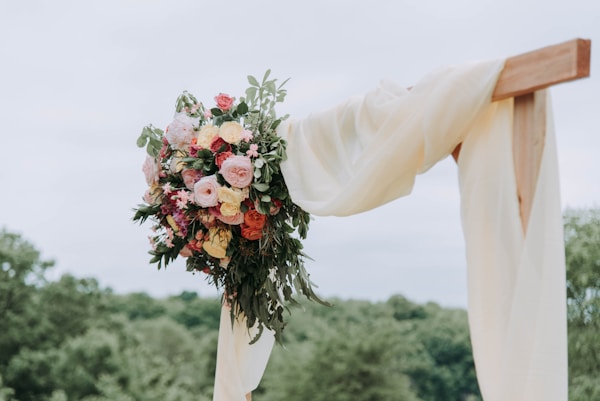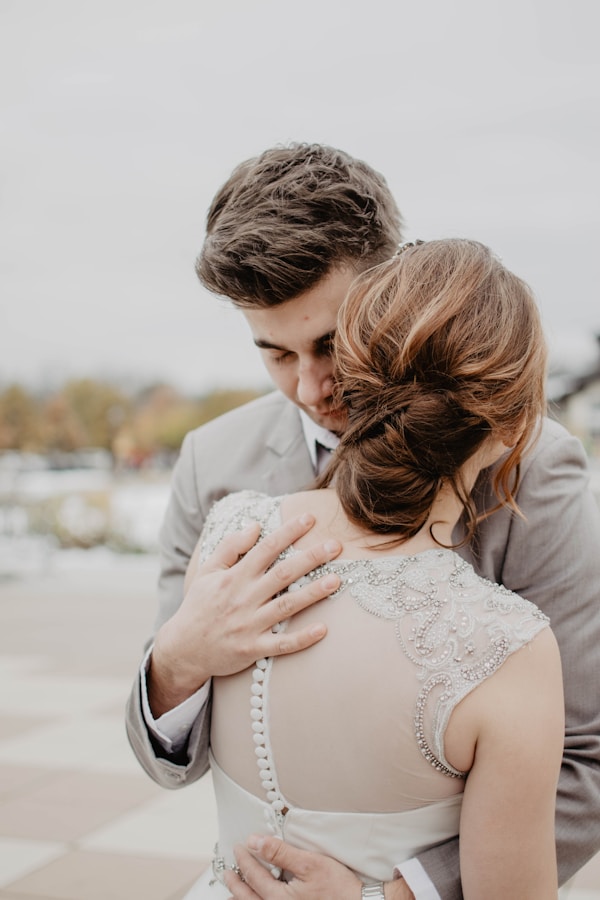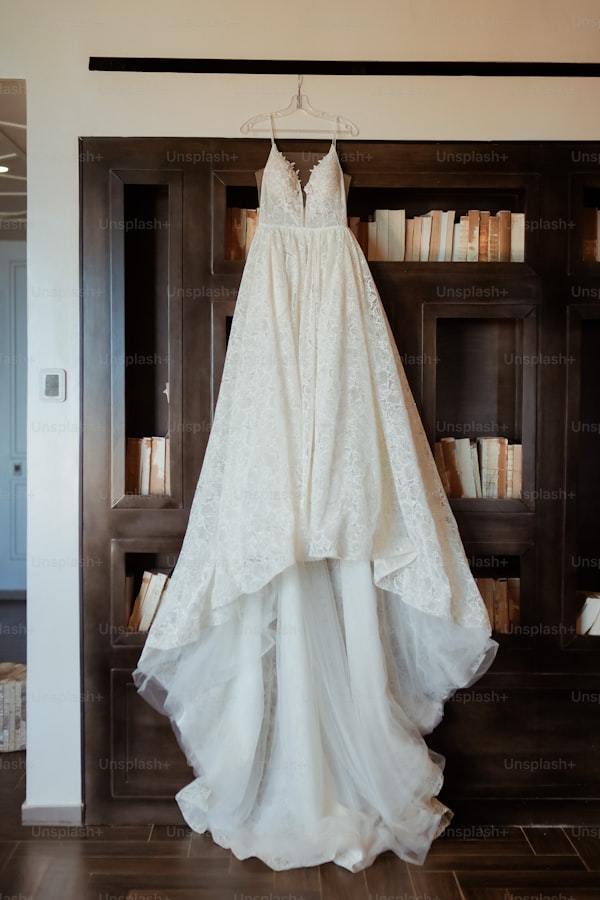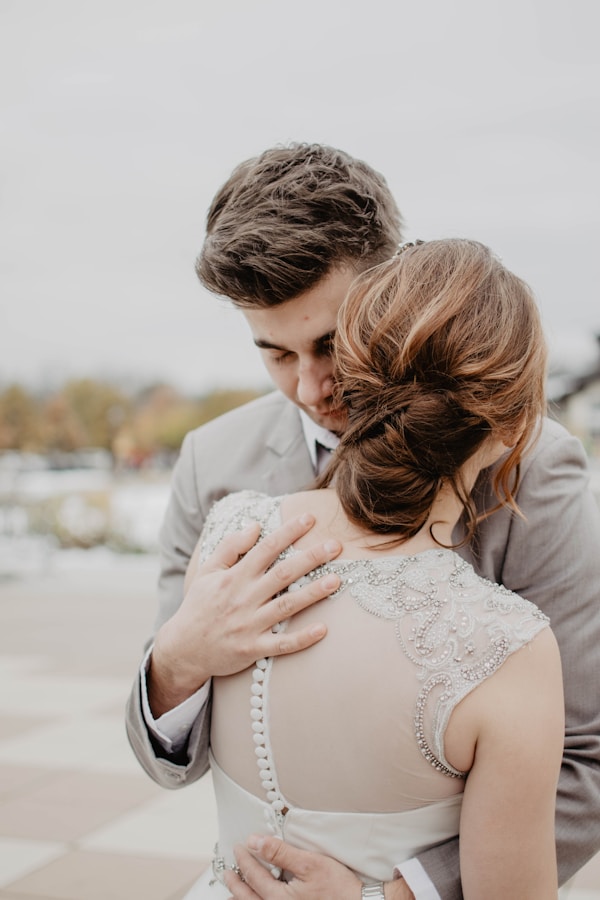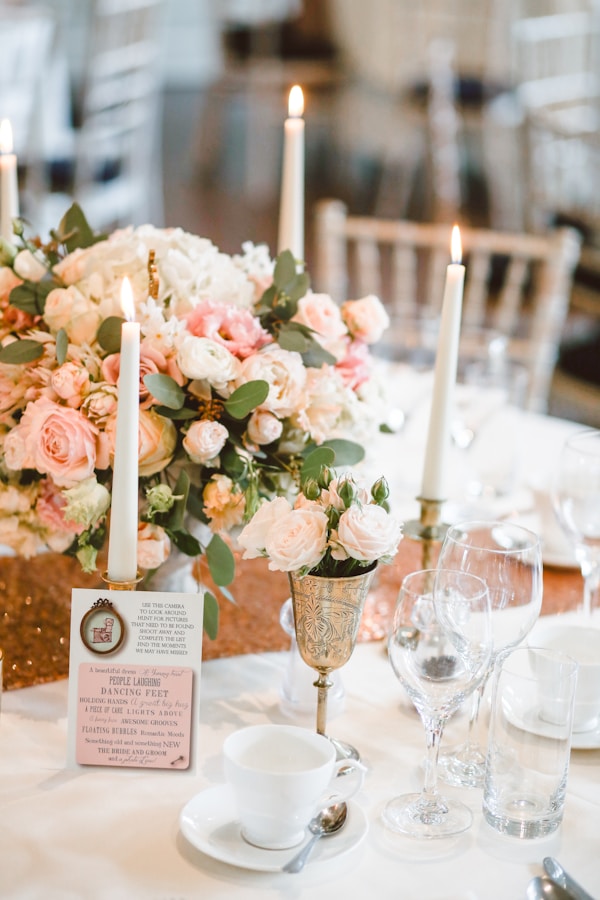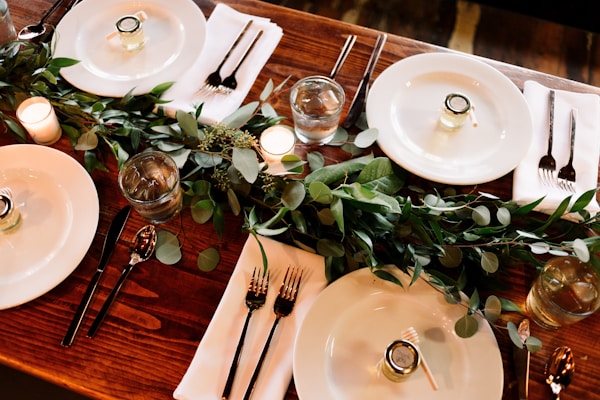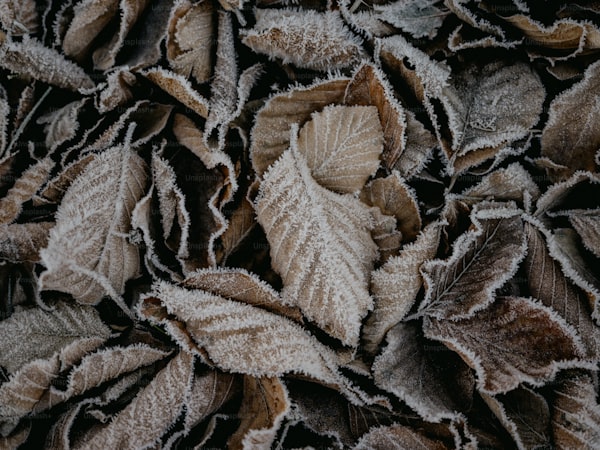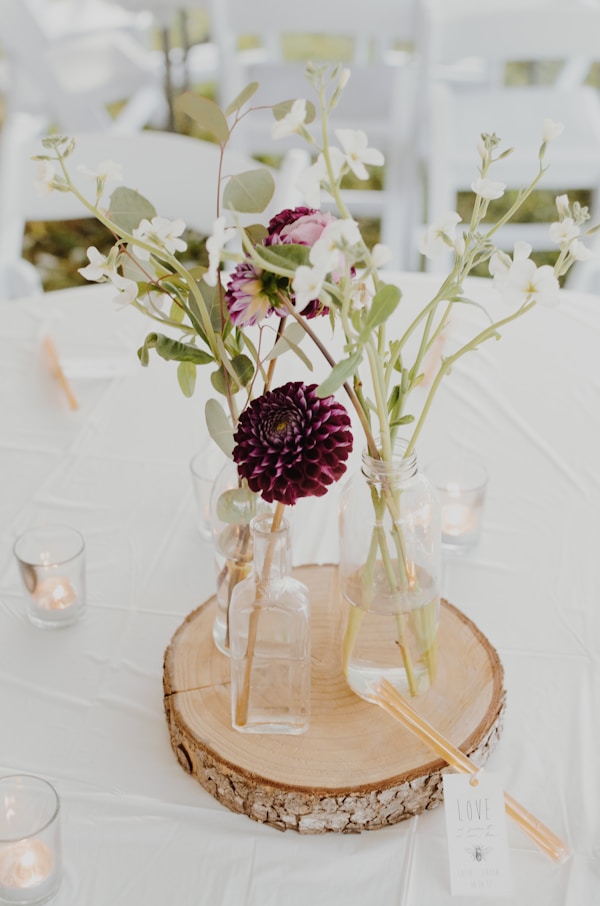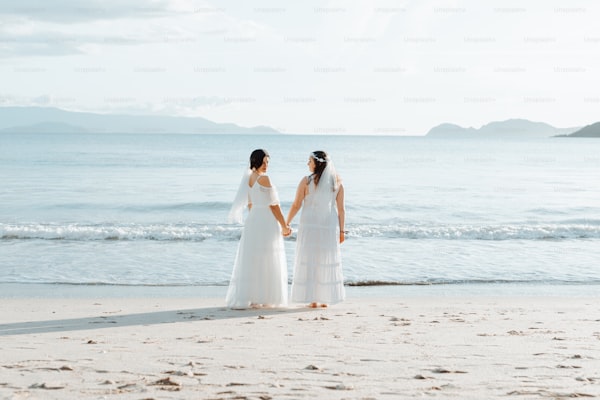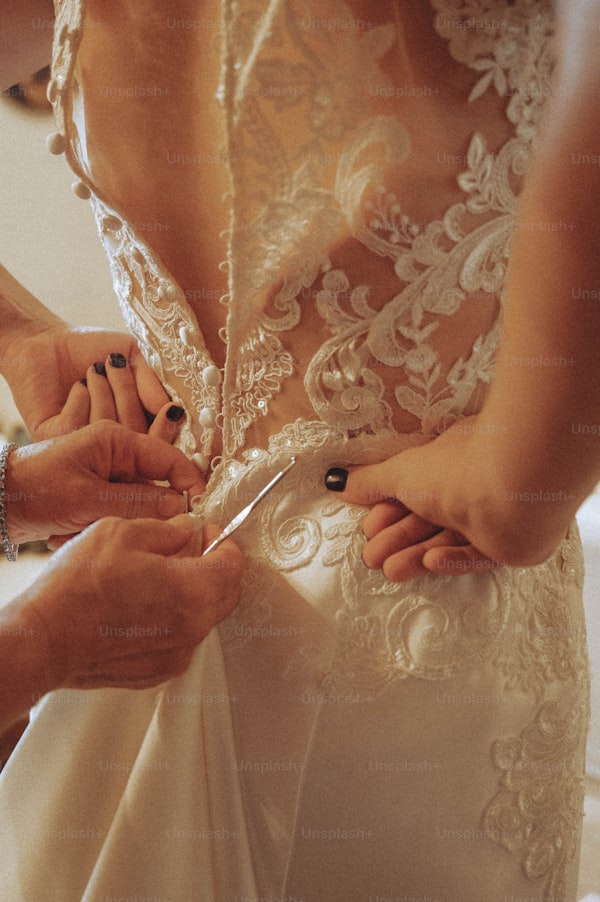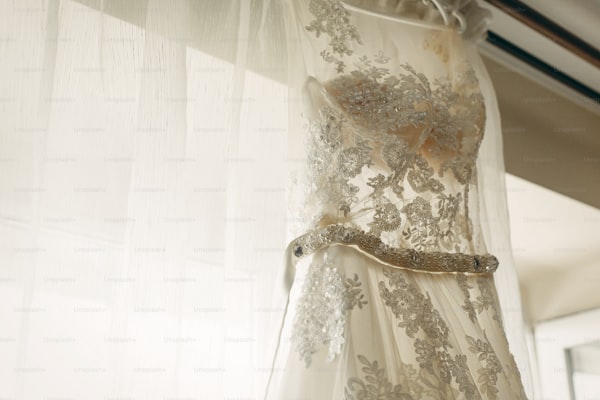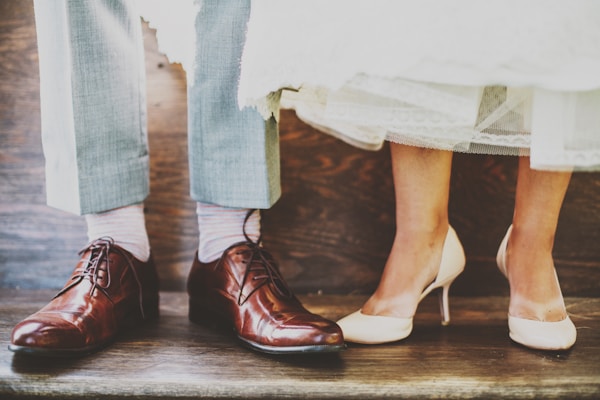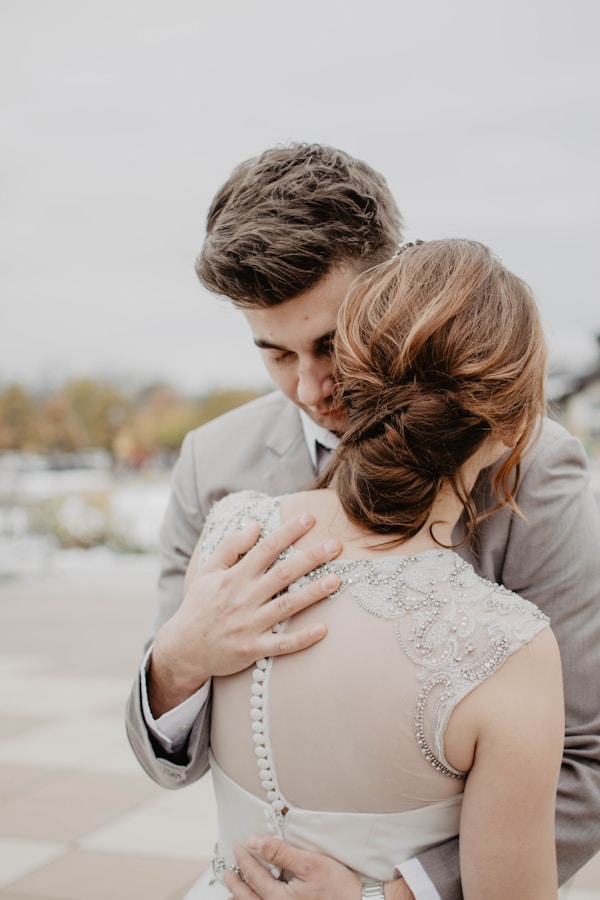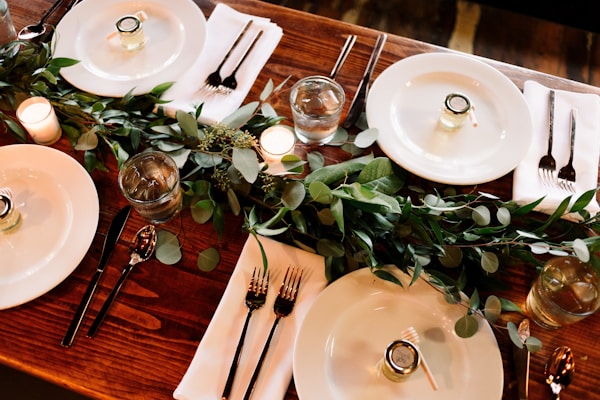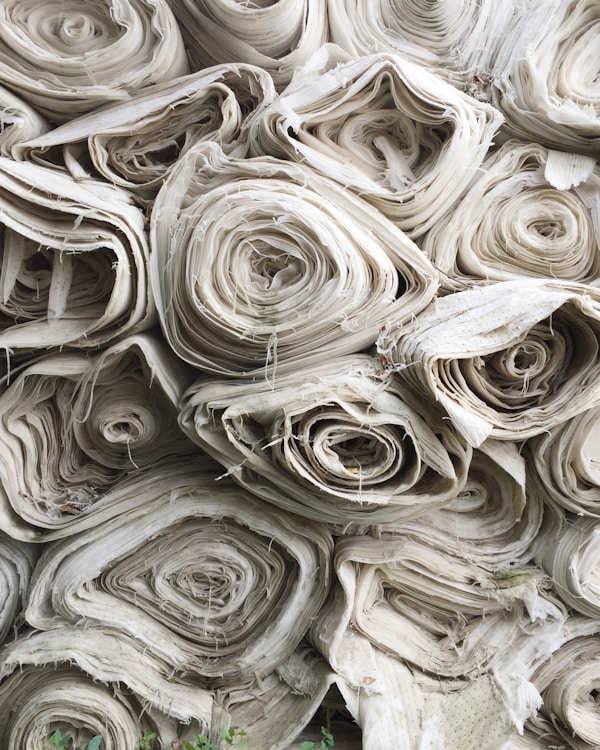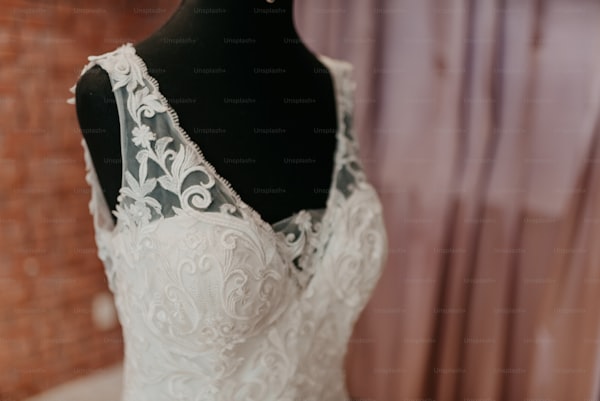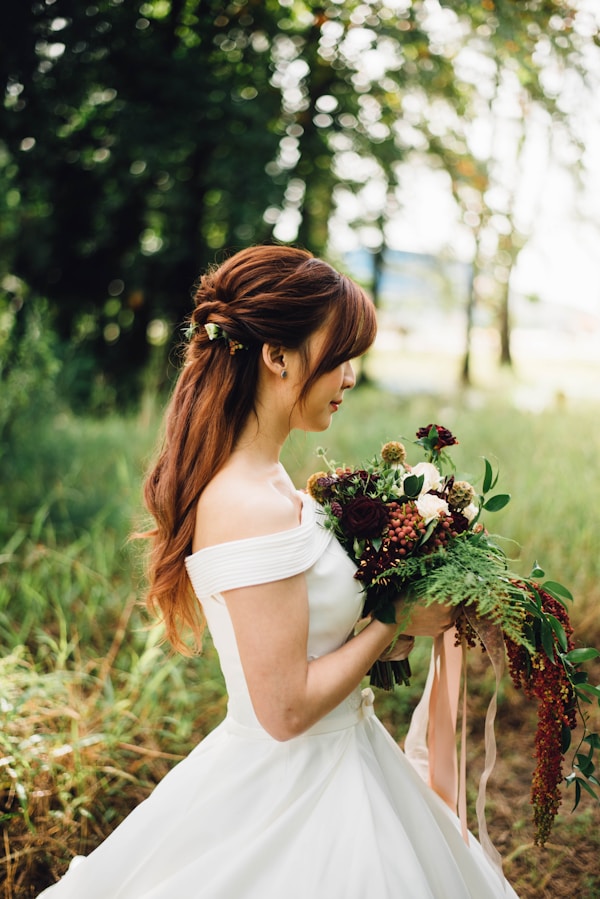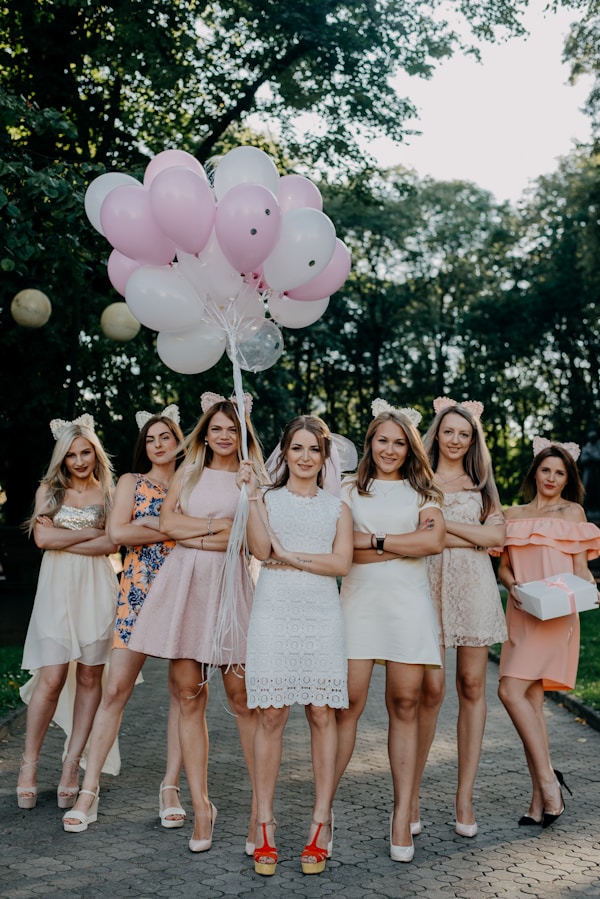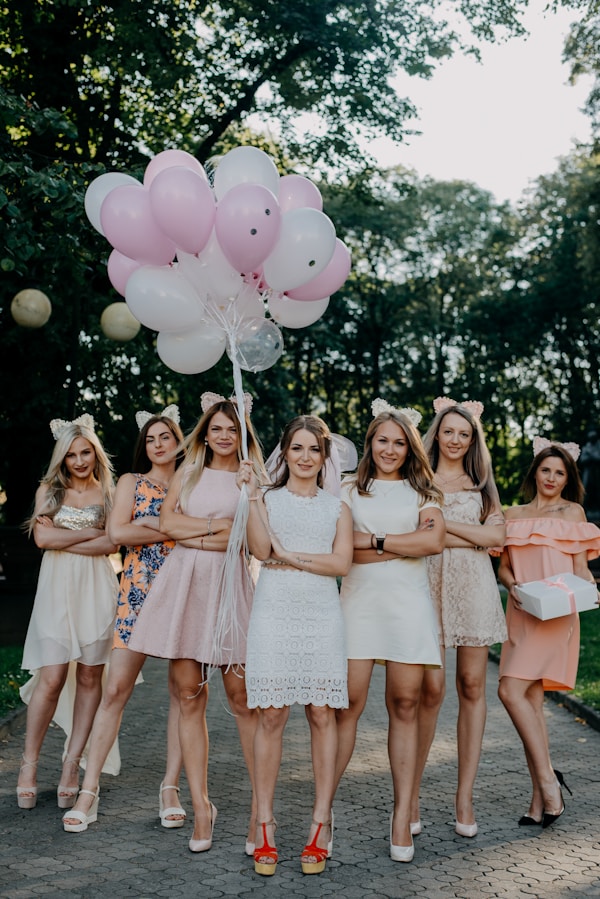Essential Methods to Reinforce Delicate Seams on a Wedding Dress
Introduction When it comes to crafting a beautiful wedding dress, ensuring that all elements, especially the seams, are perfectly reinforced is essential. Delicate seams demand special attention not only to maintain the aesthetic appeal of the garment but also to ensure that it withstands the joys and rigors of a wedding day. In this article, we will explore effective methods used to reinforce delicate seams on a wedding dress, ensuring both durability and elegance. Understanding Delicate Seams Delicate seams are often found in various areas of wedding dresses, particularly in the bodice, sleeves, and intricate lace overlays. These seams can be vulnerable to wear and tear due to the movement and activities that occur during a wedding day. Understanding the characteristics and functions of these seams is crucial for determining the best reinforcement methods. Types of Delicate Seams Different types of seams require different reinforcement techniques. Here are some common types: French Seams: Ideal for lightweight fabrics, these seams hide the raw edges and provide a neat finish. Flat-Felled Seams: Known for their durability, these seams are perfect for heavier fabrics and can provide added strength. Bias Seams: Often used in conjunction with lace, these seams stretch and can be intricate, requiring special attention. Methods to Reinforce Delicate Seams To ensure that delicate seams are well-supported, several methods can be employed. Here are some o...
Mastering Delicate Beadwork: Essential Techniques for Sewing Wedding Dresses
Understanding the Art of Delicate Beadwork in Wedding Dress MakingWedding dresses have always held a special place in the hearts of brides and designers alike. One of the most intricate aspects of creating a stunning wedding dress is handling delicate beadwork during the sewing process. This not only requires technical skill but also a deep appreciation for the artistry involved. In this article, we will explore various techniques and tips for managing delicate beadwork while ensuring a flawless finish for the perfect wedding gown.What is Delicate Beadwork?Delicate beadwork involves sewing small beads onto fabric, often embellishing dresses, particularly bridal gowns. This intricate technique adds texture, depth, and a touch of luxury to the design. However, handling delicate beadwork can be challenging, especially during the sewing process when precision is paramount.Why is It Important to Handle Beadwork Carefully?When sewing wedding dresses, especially those adorned with beadwork, it is crucial to handle materials with care. Improper handling can lead to damage, uneven stitching, or even loss of beads. Beadwork adds a unique visual appeal to the gown, making it essential to maintain its integrity throughout the sewing process.Common Delicate Beadwork MaterialsAdvantagesDisadvantagesGlass BeadsHigh shine and variety of shapesCan break easilySeed BeadsSmall and versatile; ideal for detailed workTime-consuming to applyCrystal BeadsAdds elegance with sparkleMore expensive and ...
Crafting the Perfect Wedding Dress: Steps for Creating a Fitted Bodice and A-Line Skirt
Introduction to Wedding Dress DesignYour wedding day is one of the most significant milestones in your life, and choosing the perfect dress is paramount. Among various styles, a wedding dress with a fitted bodice and A-line skirt remains a classic choice, offering a flattering silhouette for many body types. But what are the steps for creating this timeless bridal gown? In this article, we will guide you through the design process, provide tips on fabric selection, and answer some common questions related to wedding dress creation.Understanding the ComponentsBefore delving into the steps, let's break down the components of a fitted bodice and an A-line skirt. The fitted bodice is designed to shape the upper body, accentuating the waist and bust. The A-line skirt, on the other hand, flares out from the waist, creating a gentle and elegant silhouette that complements various figures.Materials NeededMaterialDescriptionFabricChoose fabrics like satin, chiffon, or lace that drape well.PatternUse patterns designed for fitted bodices and A-line skirts.Sewing SuppliesThread, needles, pins, and fabric scissors.Measuring TapeFor accurate measurements of the body.Dress FormOptional but helpful for visualization.Step-by-Step Process for Creating a Wedding DressStep 1: Gathering InspirationStart by gathering inspiration for your bridal gown. Look at magazines, Pinterest boards, or even wedding expos to find styles that appeal to you. Take note of detail elements that resonate with your pe...
Achieving the Perfect Balance Between Comfort and Style in Your Wedding Dress
The Importance of Balancing Comfort and Style in Wedding DressesYour wedding day is one of the most memorable occasions in your life, and choosing the perfect wedding dress is an essential part of that experience. Many brides find themselves asking, "How do you achieve a balance between comfort and style in a wedding dress?" Finding a dress that embodies both elements is crucial for a joyful, free-spirited celebration. This article aims to explore various aspects that help you strike that perfect balance when selecting your wedding dress.Understanding Your PreferencesBefore embarking on your wedding dress journey, it's vital to understand your style preferences and what you find comfortable. Comfort refers to how you feel in the gown during various activities like walking, sitting, dancing, and even eating. On the other hand, style encapsulates the visual appeal and trendiness of the dress. Here are a few questions to help you assess your preferences:What type of necklines do you prefer?Are you more comfortable in long sleeves or sleeveless styles?What fabric feels best against your skin?How much movement do you need in your dress?Choosing the Right FabricThe fabric of your wedding dress plays a significant role in balancing comfort and style. Some fabrics are more breathable and flexible than others, affecting how you feel throughout your wedding day. Here are some popular fabric options along with their characteristics:FabricComfort LevelStyle FactorSatinModerateElegantTull...
Exploring the Techniques Behind Creating a Stunning Wedding Dress with a Layered Tulle Skirt
IntroductionThe enchanting world of wedding dresses is filled with dreams, elegance, and intricate artistry. Among the most captivating styles is the wedding dress with a layered tulle skirt. This ethereal design not only adds volume and movement but also exudes a romantic charm that many brides yearn for. In this article, we will delve into the various techniques used to create these beautiful layered tulle skirts, providing insights that aspiring designers and brides-to-be will find invaluable.The Allure of TulleTulle is a lightweight, very fine netting that’s often made from silk, nylon, or polyester. Its delicate appearance makes it a popular choice for bridal attire. Tulle can take on various textures and finishes, from soft to stiffer varieties that hold their shape. When it comes to wedding dresses, tulle serves as the perfect fabric for creating layers that add volume and texture, allowing for a dreamy aesthetic.1. Selecting the Right TulleThe first step in creating a wedding dress with a layered tulle skirt is selecting the appropriate type of tulle. There are several options:Type of TulleCharacteristicsSilk TulleLuxurious, soft, and drapes beautifully but can be expensive.Nylon TulleMore affordable, durable, and available in a variety of colors.Polyester TulleSimilar to nylon but slightly stiffer, retaining shapes well.Choosing the right tulle depends on the desired final look and budget.2. Layering TechniquesCreating layers in a tulle skirt is an art that requires ...
Mastering Alterations for Intricate Wedding Dresses: Your Comprehensive Guide
Understanding Wedding Dress AlterationsWhen it comes to bridal fashion, nothing is more significant than the perfect wedding dress. For many brides, their gown represents a dream come true, an embodiment of their personality and style. However, with intricate details that define modern wedding dresses, managing alterations can become a daunting task. This article will guide you through the essential steps and considerations for managing alterations for a wedding dress with a lot of intricate details.The Importance of Proper AlterationsWedding dresses often feature an array of intricate details such as lace, beading, embroidery, and unique fabric textures. Ensuring that these elements are well altered not only enhances the overall look but also ensures comfort and fit on your special day. It's crucial to work with a skilled tailor who understands how to manage these complex designs without compromising their beauty.Common Challenges in Altering Intricate Wedding DressesMany brides may wonder, "How do you manage alterations for a wedding dress with a lot of intricate details?" This often involves addressing various challenges: Preserving Design Integrity: Each intricate detail is carefully designed, meaning alterations must be done delicately to preserve the original style. Choosing the Right Tailor: Not all tailors have experience with wedding dresses, especially those with intricate patterns. Timing: Alterations can require multiple fittings, making it essential to s...
Unveiling Timeless Elegance: What Methods Are Used to Create a Wedding Dress with a Vintage Lace Overlay?
Wedding dresses have always been a symbol of love and commitment, and when they feature a vintage lace overlay, they offer a touch of timeless elegance that many brides adore. The intricate patterns and delicate textures of vintage lace can transform an ordinary wedding gown into a stunning masterpiece, encapsulating both grace and nostalgia. In this article, we will explore the various methods used to create a wedding dress with a vintage lace overlay, the history behind vintage lace, and considerations for brides-to-be.Understanding Vintage LaceBefore delving into the methods of creating a wedding dress with a vintage lace overlay, it's essential to understand what vintage lace is. Vintage lace can refer to lace that is at least 20 years old and may come from different periods, including Victorian, Edwardian, and more contemporary styles. The charm of vintage lace lies in its unique patterns, texture variations, and the story it tells. This type of lace can be sourced from antique shops, estate sales, or specially curated collections. The following are common types of vintage lace:Type of Vintage LaceDescriptionChantilly LaceA lightweight lace with a fine net background and intricate floral motifs.Alençon LaceA needle lace featuring raised flowers and a fine net base, perfect for elegant overlays.Venise LaceA heavier lace that is often embroidered along the edges, lending a bold look to gowns.Appliqué LacePieces of lace sewn onto fabric to create decorative designs.Methods ...
Unveiling the Art: Techniques to Add Hand-Painted Details to Wedding Dresses
Your wedding dress is not just a garment; it symbolizes love, commitment, and the beginning of a beautiful journey. One way to make your wedding dress stand out is by incorporating stunning hand-painted details that reflect your personality and style. In this article, we will explore the various techniques used to add these artistic touches to wedding dresses, highlighting the skills involved, tips for choosing the right method, and inspiring ideas to personalize your dress. We will also answer some common questions related to this topic.Understanding Hand-Painted DetailsHand-painted details on a wedding dress can transform a simple design into a masterpiece. This technique allows for unlimited creativity, giving brides the option to customize their dresses with unique colors, patterns, and motifs. Whether you want floral designs, geometric shapes, or abstract art, the choices are virtually endless. But how exactly do you add these intricate details to a wedding dress? Let’s delve into the popular techniques used by designers and artisans.Common Techniques for Adding Hand-Painted DetailsSeveral techniques can be employed to add hand-painted details to wedding dresses, each offering different effects and styles. Here’s a look at some of the most popular methods:1. Brush PaintingThis is the most traditional and widely used technique for adding hand-painted elements. Artists use fabric paint and brushes to create stunning designs directly on the dress. Brush painting allows for ...
How to Design a Wedding Dress That Complements the Venue and Season
Designing a wedding dress is an art that blends personal style with the context of the venue and season. A well-chosen dress can enhance the overall atmosphere of the wedding, making it a memorable event for both the couple and their guests. In this article, we will explore various aspects of wedding dress design, including materials, styles, and tips to ensure that the dress complements the venue and season perfectly.Understanding the Importance of Venue and SeasonThe venue and season set the tone for the entire wedding. A dress that looks stunning in a beach setting may not translate well to a formal church wedding. Similarly, a heavy embroidered gown might not be suitable for a summer outdoor wedding. Understanding these nuances is crucial in the design process.Key Factors to ConsiderWhen designing a wedding dress, consider the following factors:Venue Type: Is it a luxurious ballroom, a rustic barn, or a scenic beach?Season: Is it summer, fall, winter, or spring? Each season has unique characteristics that can influence fabric choices and dress styles.Body Type: The dress should flatter the bride's figure to enhance her confidence on her special day.Wedding Theme: A cohesive theme that includes colors, decorations, and even floral arrangements can help guide the dress design.Designing for Different SeasonsDifferent seasons bring unique opportunities and challenges for wedding dress designs. Below is an overview of design approaches for each season:SeasonDress TypeFabric Su...
Ensuring the Durability of Zippers and Buttons on Your Wedding Dress: Effective Methods Explained
IntroductionWhen it comes to selecting a wedding dress, one of the important factors to consider is its durability, especially when it comes to zippers and buttons. Wedding dresses are often worn for long periods, and the last thing any bride wants is a malfunctioning zipper or a button that pops off at the most inconvenient moment. In this article, we will explore the various methods used to ensure the durability of zippers and buttons on wedding dresses, along with answers to related questions that brides might have as they prepare for their big day.Why Durability MattersThe durability of zippers and buttons on a wedding dress is crucial for a few reasons. Firstly, a wedding dress is typically worn for extended periods throughout the day, including during the ceremony and the reception. Secondly, wedding dresses are often subject to various pressures—from dancing to hugging friends and family. Finally, the emotional significance of the dress increases the need for reliable fastenings. Brides want every moment of their special day to be perfect, without worrying about wardrobe malfunctions.Common Methods for Ensuring DurabilityThere are several methods and best practices in the fashion industry that ensure the longevity and performance of zippers and buttons on wedding dresses. Below are some of the most effective techniques.1. Choosing the Right MaterialsThe choice of materials is fundamental in enhancing durability. High-quality zippers made from robust nylon or metal are ...
Mastering the Art of Unique Fabric Combinations in Wedding Dress Production
Understanding Unique Fabric Combinations in Wedding Dress ProductionWhen it comes to the world of wedding dresses, the combination of unique fabrics plays a crucial role in crafting stunning garments that stand out. Whether you are a designer, seamstress, or a bride looking for the perfect wedding attire, grasping how to handle these combinations can significantly elevate the final product. In this article, we will explore how to effectively manage the production of wedding dresses using unique fabric combinations while also addressing common inquiries related to this topic.Why Choose Unique Fabric Combinations?The choice of fabric is foundational in the design of wedding dresses. Unique fabric combinations can add texture, dimension, and distinctiveness, which can create a one-of-a-kind aesthetic. Here are some compelling reasons for exploring unique fabric combinations: Creativity: Unique blends allow designers to express innovative ideas and styles. Customization: Couples can tailor their wedding attire to reflect their personal taste. Functionality: Different fabrics can provide various functional benefits, such as comfort and breathability.Key Factors to Consider When Combining FabricsCombining fabrics requires careful thought and planning. Here are some vital factors to consider:1. Fabric TypesEach type of fabric brings its own characteristics to the table:Fabric TypeCharacteristicsBest UsesSilkLuxurious, soft, and smoothGowns and overlaysLaceDelicate, intricat...
What You Need to Know About Creating a Wedding Dress with a Dramatic Train
When it comes to planning a wedding, every detail counts—from the venue to the flowers, and most importantly, the dress. One trend that has captivated brides around the world is the wedding dress with a dramatic train. But what are the considerations for creating a breathtaking gown that features this stunning element? In this article, we will explore the key factors to keep in mind when designing a wedding dress with a dramatic train, including style, fabric, comfort, and practicality.Understanding the Dramatic TrainA dramatic train is an extended portion of fabric that trails behind a wedding dress, adding elegance and grandeur to the bridal look. Whether it’s a cathedral, chapel, or sweep train, each style serves its own unique purpose. Understanding these options is crucial for brides who want to make a lasting impression on their special day.Train TypeLengthBest ForCathedral TrainMore than 10 feetFormal weddingsChapel TrainAbout 6 feetTraditional settingsSweep TrainAbout 1 footLess formal occasionsKey Considerations for Designing a Dramatic TrainCreating a wedding dress with a dramatic train involves several considerations that can impact the overall design and experience for the bride. Here are the most important factors to consider:1. Fabric ChoiceThe fabric of the dress is crucial when it comes to the train's flow and appearance. Heavier fabrics like satin or taffeta provide structure, while lighter fabrics like chiffon or organza create a delicate, flowing look. The ...
How to Design a Versatile Wedding Dress for Future Alterations
IntroductionDesigning a wedding dress is an exciting yet challenging task. Many brides dream of wearing a stunning gown on their special day, but the thought of its future usability often gets overlooked. The question arises: How do you design a wedding dress that can be easily altered for future use? This article will explore essential design elements, techniques, and tips for creating a wedding dress that remains versatile, allowing brides to modify it after the big day.Understanding the Importance of VersatilityA wedding wardrobe can often be a substantial financial investment, with a wedding dress typically costing between $1,000 and $3,000, depending on the style, fabric, and designer. The average bride spends a significant portion of her wedding budget on her dress—money that should ideally contribute to lasting memories rather than just a one-time wear. By designing a dress that can be altered for future occasions, you not only provide financial relief but also keep the emotional value of the dress alive.Key Design Elements for VersatilityTo ensure that your wedding dress can be easily altered, consider the following design elements:ElementDescriptionFabric ChoiceOpt for fabrics that hold their shape and are easy to alter, such as silk, satin, or chiffon. Avoid fragile materials that may not withstand modification.Style SimplicityChoose a silhouette that can transition from formal to informal. A-line dresses or sheath styles offer flexibility, allowing for future repur...
Unveiling the Secrets: What Techniques Are Used to Create a Wedding Dress with a Unique Hemline?
Creating Unique Hemlines in Wedding DressesWhen it comes to wedding dresses, every detail matters. Among these details, the hemline plays a crucial role in defining the overall aesthetic of the gown. A unique hemline can transform a traditional dress into a stunning masterpiece, grabbing the attention of everyone in the room. So, what techniques are used to create a wedding dress with a unique hemline? This article will explore various methods, styles, and tips that designers and dressmakers employ to craft beautiful, one-of-a-kind wedding dresses.Understanding HemlinesThe hemline of a dress refers to the edge of the fabric that finishes the dress. It can dramatically affect the silhouette and the visual impact of a wedding dress. Unique hemlines can include variations such as asymmetrical cuts, high-low styles, and dramatic trains. Let's delve into the various techniques used to achieve these distinctive looks.Techniques for Unique HemlinesTechniqueDescriptionAsymmetrical HemmingThis technique involves cutting the fabric at different lengths, creating a visually appealing imbalance. Designers often use this style to add a contemporary twist to traditional gowns.LayeringBy using multiple layers of fabric, designers can create a tiered hemline. This style adds dimension and movement to the dress, especially when the bride walks down the aisle.Adding EmbellishmentsUnique hemlines can also incorporate embellishments like lace, embroidery, and beading. These details enhance the h...
Achieving the Perfect Flattering Fit: Methods for an Empire Waist Wedding Dress
IntroductionFinding the ideal wedding dress is a dream come true for many brides. Among the various styles available, the empire waist wedding dress stands out for its elegant silhouette and the flattering fit it offers. However, many brides wonder, “What methods are used to achieve a flattering fit for a wedding dress with an empire waist?” In this article, we will explore the techniques and adjustments that can be implemented to ensure that an empire waist wedding dress complements your figure perfectly. From fabric choices to alteration techniques, we will cover everything you need to know.Understanding the Empire Waist SilhouetteThe empire waist is characterized by a high waistline that sits just below the bust, flowing into a skirt that cascades to the floor. This design is not only timeless but also flattering for various body types. The empire waist can enhance the bust while cleverly disguising the hips and waist, making it an ideal choice for brides of different shapes and sizes. Understanding how to achieve a great fit in this style involves considering multiple factors, including fabric, cut, and proper tailoring.1. Choosing the Right FabricWhen it comes to creating a flattering empire waist wedding dress, the choice of fabric plays a crucial role. Different materials behave in unique ways, influencing the overall fit and silhouette. Here are some popular fabrics often used for empire waist gowns:Chiffon: This lightweight and flowy fabric drapes beautifully and can...
Mastering the Art of Wedding Dress Materials: Essential Logistics for Sourcing Rare Fabrics
Introduction to Sourcing Rare Materials for Wedding DressesWhen it comes to crafting the perfect wedding dress, one of the most critical factors is the selection of materials. Sourcing rare fabrics can pose a challenge for designers, wedding planners, and brides alike. The logistics involved in obtaining these unique materials require meticulous planning, strong vendor relationships, and an understanding of the market landscape. This article aims to explore the best practices in managing the logistics of sourcing rare materials for wedding dresses, ensuring that your bridal gown is not only beautiful but also made from high-quality fabrics.Understanding the Importance of Rare MaterialsRare materials can significantly elevate a wedding dress, transforming it from ordinary to extraordinary. The allure of unique fabrics such as silk chiffon, French lace, and vintage tulle provides a distinctive aesthetic that many brides seek. These materials can add texture, depth, and an air of sophistication to a gown. When sourcing rare fabrics, several questions may arise: What types of rare materials are available? Where can I find reputable suppliers? How can I ensure the quality of the materials?Key Steps in Managing LogisticsSuccessfully sourcing rare materials requires a structured approach. Here are the key logistics steps to consider:1. Research and Identify Rare MaterialsBegin by researching various types of rare materials that can enhance your wedding dress design. Utilize...
Essential Tips and Best Practices for Creating a Stunning Wedding Dress with Heavy Beadwork
Unveiling the Art of Heavy Beadwork in Wedding Dress DesignCreating a wedding dress that stands out is no small feat, especially when it comes to incorporating heavy beadwork. While the intricate process of bead application may seem daunting, it can elevate a gown to the heights of elegance and sophistication. In this guide, we will explore the best practices for creating a wedding dress with heavy beadwork, offering insights, techniques, and tips for aspiring designers and brides-to-be alike.Understanding the Importance of Beadwork in Wedding DressesBeadwork can transform a simple wedding dress into a work of art. It adds texture, depth, and sparkle, reflecting light beautifully and enhancing the overall aesthetic of the gown. Beadwork can be used in various ways, from delicate accents to bold patterns that cover entire panels. However, achieving the desired effect requires careful planning and execution.Choosing the Right MaterialsBefore diving into the beadwork, selecting the right materials for both the dress and the beads is crucial. Consider the fabric, color, and weight of the beads. Here are some factors to consider:FactorRecommendationFabricOpt for fabrics like silk, satin, or tulle, which can support beadwork well.Bead TypeChoose between glass, acrylic, or crystal beads based on the desired weight and sparkle.Color SchemeEnsure beads complement the dress color, enhancing rather than overwhelming the design.Planning Your DesignOnce you have chosen your materials, it’...
Ensuring Consistent Drape in Wedding Dress Fabric: The Ultimate Guide
Understanding Drape in Wedding Dress FabricsThe drape of a wedding dress is crucial to achieving the desired look for your special day. When selecting fabrics, it's essential to understand how various materials behave and how to ensure their drape remains consistent. This guide will not only answer the question, “How do you ensure the drape of a wedding dress fabric remains consistent?” but also provide tips and considerations for brides who want their gowns to look flawless.What is Drape?Drape refers to how a fabric hangs and moves on the body. It’s a critical factor in the overall silhouette of a wedding dress. Fabrics with good drape flow gracefully, creating an elegant look, while stiffer fabrics may stand away from the body. Understanding the properties of different fabrics can significantly influence the final outcome of your wedding gown.Factors Affecting DrapeSeveral factors impact the drape quality of a fabric: Fabric Type: Natural fibers such as silk and chiffon generally have a better drape compared to synthetic materials. Weight: Heavier fabrics tend to hang differently than lighter ones, affecting overall drape. Texture: The surface texture of a fabric can influence how it catches and reflects light, changing its appearance. Fabric Type Characteristics Ideal Use Silk Soft, luxurious, excellent drape Classic ball gowns, fitted silhouettes Chiffon Lightweight, sheer, flowing Layered designs, soft A-line dresses Taffeta Stif...
Unveiling the Art of Crafting a Wedding Dress with a Cascading Ruffle Skirt
Introduction When it comes to wedding fashion, the wedding dress stands out as one of the most important choices a bride makes. Among various silhouettes and styles, a cascading ruffle skirt is a timeless favorite that adds a dramatic flair to any bridal ensemble. But what techniques are used to create a wedding dress with a cascading ruffle skirt? In this article, we will explore the intricacies involved in designing and crafting this stunning feature. The Allure of Cascading Ruffles Cascading ruffles evoke a sense of romance and fluidity, which is why many brides opt for this design. The soft, flowing layers of fabric add movement and elegance, ideal for both traditional and modern weddings. Brides can achieve a variety of looks, from ethereal and whimsical to luxurious and grand. However, creating a ruffle skirt that truly captivates requires a skilled combination of techniques and design principles. Understanding Fabric Selection The first step in creating a wedding dress with a cascading ruffle skirt is selecting the right fabric. Here are some popular fabric choices: Fabric Description Chiffon A lightweight, sheer fabric that flows beautifully and allows for graceful movement. Tulle A net-like fabric that provides volume while still maintaining a delicate appearance. Satin A luxurious fabric with a glossy finish, perfect for a polished look. Organza A crisp, lightweight fabric that holds its shape well, ideal for structured ruffles. Techniques for Creating ...
Expert Tips on Handling Alterations for a Wedding Dress with Multiple Layers of Fabric
Understanding Wedding Dress AlterationsWedding dress alterations are a crucial step in ensuring that a bride feels confident and beautiful on her special day. One of the most challenging aspects of altering a wedding dress is dealing with dresses that have multiple layers of fabric. In this article, we will explore effective techniques, common questions, and expert advice on how to handle alterations for a wedding dress with multiple layers of fabric.The Importance of Proper AlterationsWhen it comes to wedding dresses, the fit can significantly impact how a bride feels. A well-altered dress enhances the silhouette and allows for comfort throughout the ceremony and reception. Multiple layers can complicate the alteration process, but with the right knowledge, you can navigate this challenge easily.Common Challenges with Multi-layered Wedding DressesAltering a multi-layered wedding dress presents unique challenges. Here are some common issues faced: Layer Thickness: Different fabrics have varying thicknesses, which can alter the overall fit. Weight Distribution: Some layers may be heavier than others, affecting how the dress falls. Seam Visibility: Seam placement can be tricky, especially with sheer or delicate fabrics that require careful handling. Factor Description Thickness Different materials used may require specific tools and techniques for alterations. Weight The weight of layers can create alterations that need to consider balance. Seams ...
